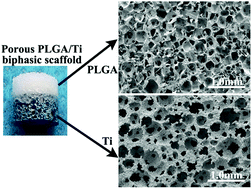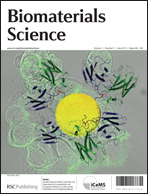Preparation of porous PLGA/Ti biphasic scaffold and osteochondral defect repair
Abstract
In this study, a porous PLGA/Ti biphasic scaffold was prepared and its potential to repair osteochondral defects was evaluated. The microstructure and mechanical properties of porous PLGA and porous Ti and their interface were characterized. The as-prepared biphasic scaffolds were implanted into rabbit knees for 1 and 3 months (PLGA/Ti group), and the porous PLGA (PLGA group) or empty defect (Untreated group) was also used. The results showed that both porous PLGA and porous Ti had an interconnected porous structure. The mechanical strength of porous PLGA and porous Ti was similar to that of cartilage and subchondral bone, respectively. The interface analysis revealed that the as-prepared biphasic scaffold had good overall integrity and interface stability. The gross observation and histological evaluation of specimens showed that hyaline-like cartilage filled the defects to a certain extent at 3 months for both PLGA/Ti and PLGA groups while the defects remained in an untreated group. In the PLGA/Ti group, better cartilage and subchondral bone repair was observed, and quantitative macroscopic and histological score evaluations confirmed this result, indicating that the porous biphasic PLGA/Ti scaffold had good biocompatibility and the best osteochondral defect repair ability in this study. The as-prepared porous biphasic scaffold showed the potential to be used in osteochondral tissue engineering for osteochondral defect repair.


 Please wait while we load your content...
Please wait while we load your content...